
Lagerstroemia, commonly known as crape myrtle, is a genus of around 50 species of deciduous and evergreen trees and shrubs native to the Indian subcontinent, southeast Asia, northern Australia, and other parts of Oceania, cultivated in warmer climates around the world. It is a member of the family Lythraceae, which is also known as the loosestrife family. These flowering trees are beautifully colored and are often planted both privately and commercially as ornamentals.
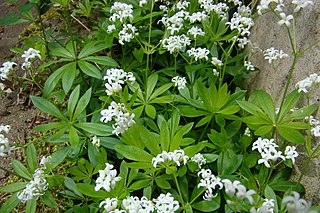
Galium odoratum, the sweet woodruff or sweetscented bedstraw, is a flowering perennial plant in the family Rubiaceae, native to much of Europe from Spain and Ireland to Russia, as well as Western Siberia, Turkey, Iran, the Caucasus, China and Japan. It is also sparingly naturalised in scattered locations in the United States and Canada. It is widely cultivated for its flowers and its sweet-smelling foliage.

Triadenum, known as marsh St. John's worts, is a small genus of flowering plants in the family Hypericaceae. The genus is characterized by opposite, blunt-tipped leaves and pink flowers with 9 stamens. They are distributed in North America and eastern Asia.

Armeria maritima, the thrift, sea thrift or sea pink, is a species of flowering plant in the family Plumbaginaceae. It is a compact evergreen perennial which grows in low clumps and sends up long stems that support globes of bright pink flowers. In some cases purple, white or red flowers also occur. It is a popular garden flower and has been distributed worldwide as a garden and cut flower. It does well in gardens designed as xeriscapes or rock gardens. The Latin specific epithet maritima means pertaining to the sea or coastal.

Ulmus lanceifoliaRoxburgh, ex Wall., occasionally known as the Vietnam elm, is a very large tree endemic to a wide area of southern Asia. Its range extends southeast and eastwards from Darjeeling in the Himalaya, through Bangladesh, southern China, Myanmar, Thailand, Laos, Vietnam and on discontinuously into Indonesia, straddling the Equator in Sumatra and Celebes.
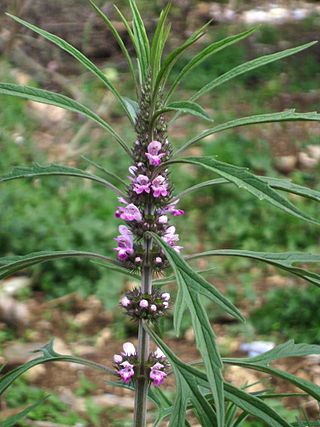
Leonurus sibiricus, commonly called honeyweed or Siberian motherwort, is an herbaceous plant species native to China, Mongolia, and Siberia. It has verticillaster inflorescence. It is naturalized in many other parts of the world, including South, Central and North Americas.
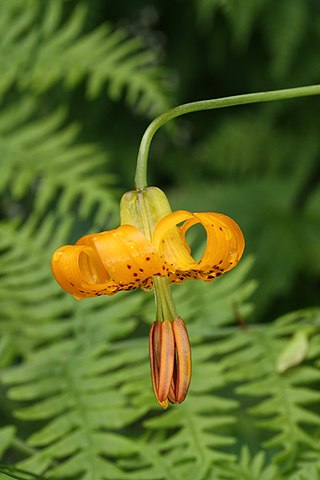
Lilium columbianum is a lily native to western North America. It is also known as the Columbia lily, Columbia tiger lily, or simply tiger lily.

Butomus is the only known genus in the plant family Butomaceae, native to Europe and Asia. It is considered invasive in some parts of the United States.

Stuckenia pectinata, commonly called sago pondweed or fennel pondweed, and sometimes called ribbon weed, is a cosmopolitan water plant species that grows in fresh and brackish water on all continents except Antarctica.

Alisma lanceolatum is a species of aquatic plant in the water plantain family known by the common names lanceleaf water plantain and narrow-leaved water plantain. It is widespread across Europe, North Africa and temperate Asia. It is naturalized in Australia, New Zealand, Oregon, California and British Columbia. It is considered a noxious weed in some places.

Trypanophora semihyalina is a species of moth in the family Zygaenidae. It is found in south-east Asia, including India, China, Hong Kong and parts of Taiwan.
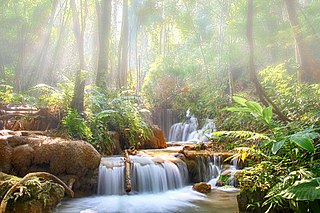
Doi Luang National Park is one of the biggest national parks in Northern Thailand.

Phu Sang National Park is a national park in Northern Thailand.

Bauhinia tomentosa, also known as yellow bauhinia or yellow bell orchid tree, is a species of plant in the family Fabaceae. It is found in South Africa, Mozambique, Zimbabwe, Tropical Africa, India, and Sri Lanka.

Lymantria todara is a moth of the family Erebidae first described by Frederic Moore in 1879. It is found in India (Nilgiri) and Sri Lanka.

Argemone ochroleuca is a species of prickly poppy, a flowering plant commonly known as pale Mexican prickly poppy or Mexican poppy. It is native to Mexico and is also an introduced weed in many temperate and tropical regions of the world. It can grow up to 1 m in height and has a sticky yellow sap.
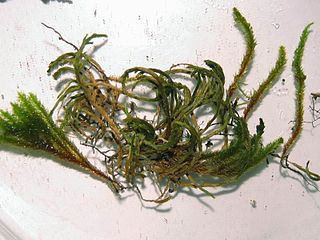
Leucodontaceae is a family of mosses belonging to the order Hypnales.

Papilionanthe greenii is a species of epiphytic orchid native to Bhutan.

Lagerstroemia duperreana is a species of flowering plant in the family Lythraceae. It is found in Indochina, including in southern Vietnam, Laos, Thailand, and Cambodia.



















